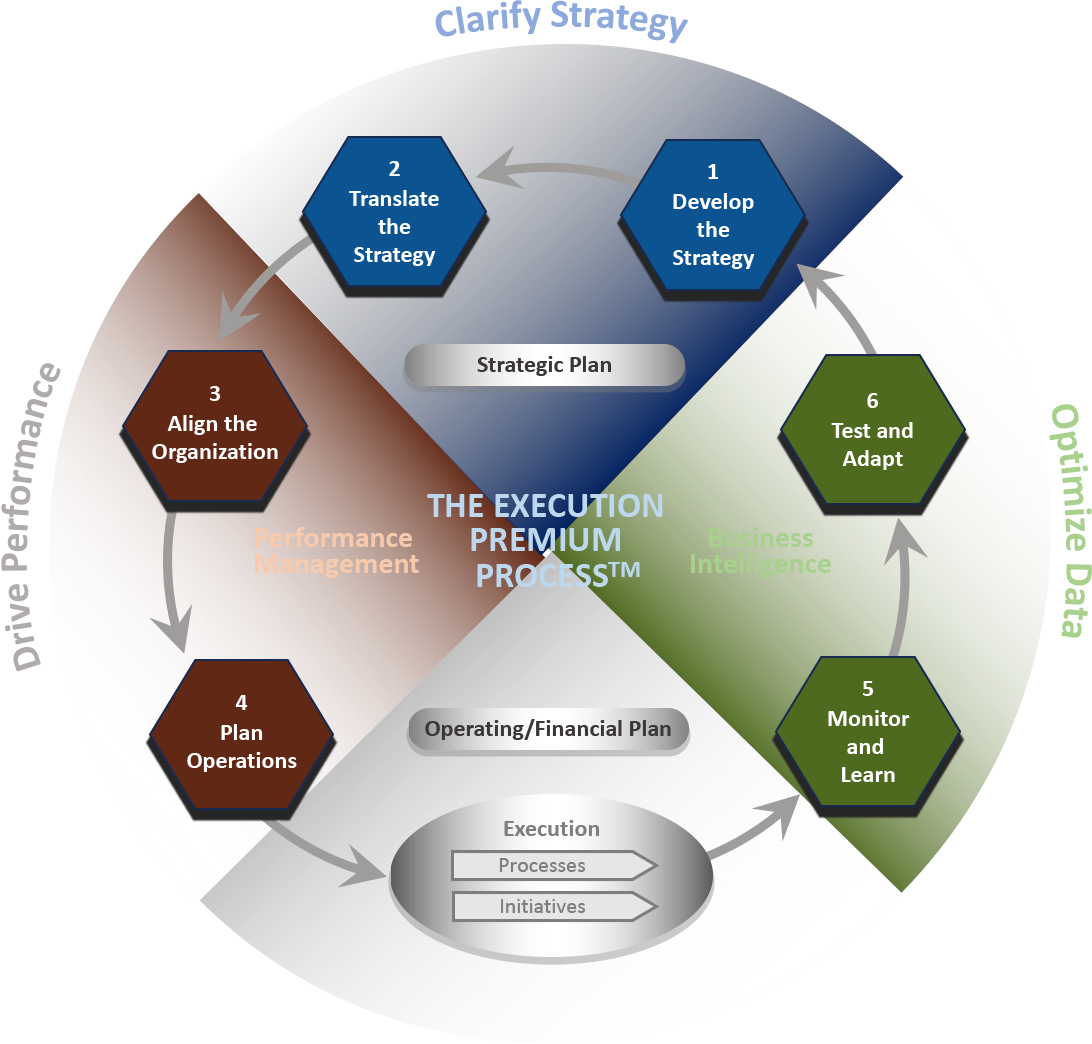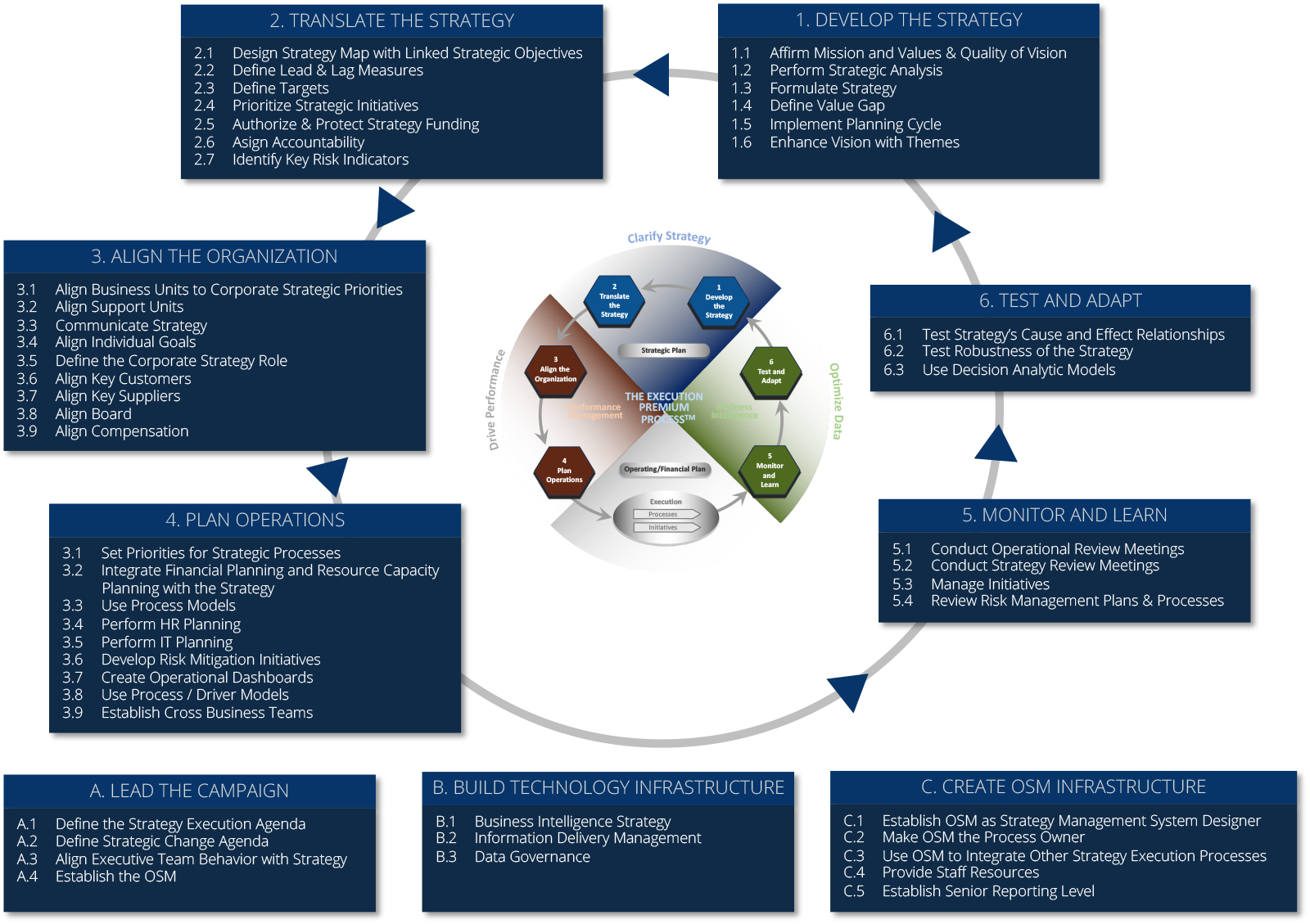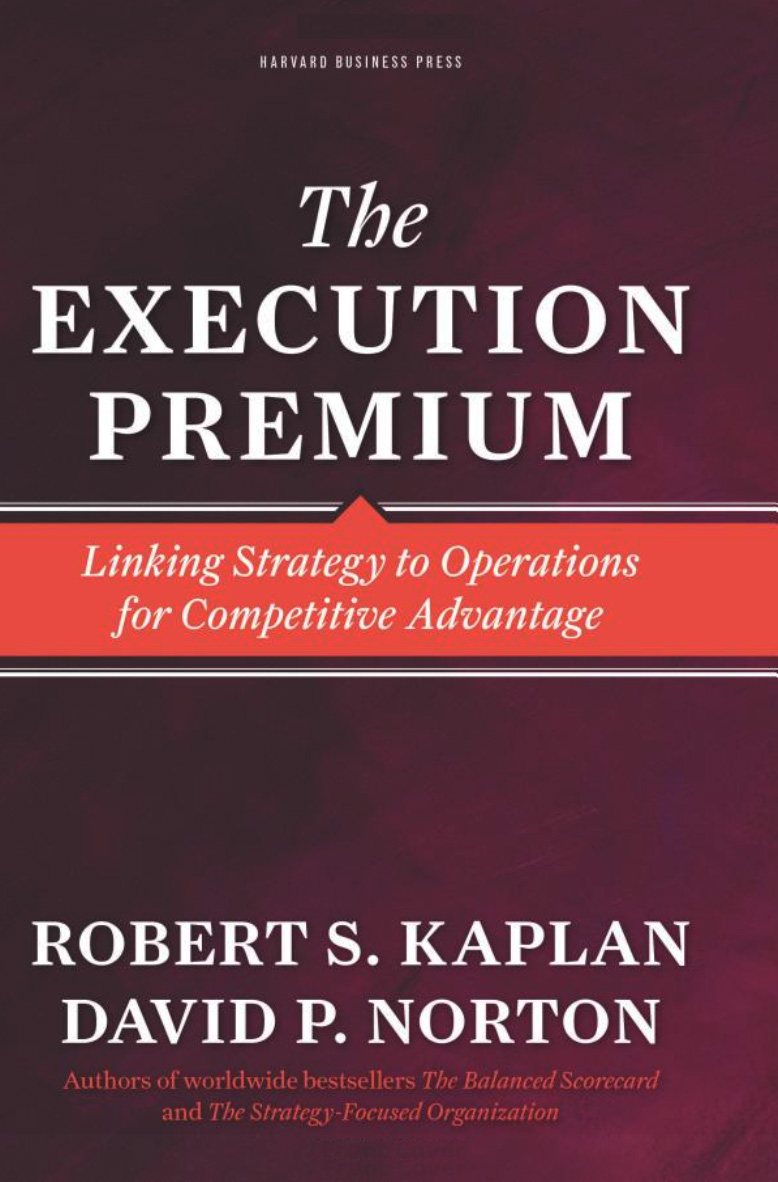The powerful Execution Premium Process™, the XPP™, was developed by Drs. Robert S. Kaplan and David P. Norton and their Palladium colleagues, the world's leading experts on linking strategy to operations for sustainable performance.
For the organizations that have adopted the Kaplan-Norton BSC Framework (XPP) and have obtained exceptional results, see the Balanced Scorecard Hall of Fame.


The powerful Execution Premium Process—the XPP—was developed by Drs. Robert S. Kaplan and David P. Norton and their Palladium colleagues, the world's leading experts on linking strategy to operations for sustainable performance.
XPP has been used as a management platform to help hundreds of organizations worldwide to:
- Clarify strategy by establishing their vision and mission, articulating how the organization will differentiate itself from competitors and create new value for stakeholders, mapping the cause-and-effect linkages behind the strategy, and using tools to report progress on their strategy execution.
- Drive performance by managing strategic initiatives; linking the strategy to operational planning, budgeting, and forecasting processes; strengthening financial consolidation processes; reporting performance results; and allocating resources dynamically.
- Optimize data by leveraging business intelligence and analytical tools and technology to gather the right data; drawing the most valuable insights from it; and making timely, well-informed business decisions.
Holistic, practical, and proven, the XPP ensures that your key business processes, operations, and technologies support your strategy.
The Execution Premium Process is based on the Kaplan-Norton Strategy Management System™, a comprehensive management model designed to address one of management’s greatest challenges: linking strategy formulation and planning with operational execution. It consists of six major stages:
- Develop the Strategy – Your organization must be able to state exactly what business you’re in, identify the key issues you face, and determine how best to compete. Developing the strategy uses an array of strategy tools such as mission, values, and vision statements; external competitive, economic, and environmental analyses; methodologies such as Michael Porter’s five forces and competitive positioning framework, the resource-based view of strategy, and blue ocean strategies, as well as scenario planning, dynamic simulations, and war-gaming.
- Translate the Strategy – Your organization must be willing to develop strategic objectives, measures, targets, initiatives, and budgets that will ultimately guide action and resource allocation. You’ll need to be able to describe your strategy, measure your plan, identify plans of action, figure out how to fund your initiatives, and decide who will lead the strategy execution process. Translating the strategy uses such tools as strategy maps and Balanced Scorecards, along with targets and strategic initiatives.
- Align the Organization – Your organization must be able to link company strategy to the strategies of individual business units while both aligning and motivating employees to optimize strategy execution. You align the organization with the strategy by cascading strategy maps and Balanced Scorecards to all organizational units, by aligning employees through a formal communications process, and by linking employees’ personal objectives and incentives to strategic objectives.
- Plan Operations – Your organization must link long-term strategy with day-to-day operations, aligning strategy with operating plans and budgets while focusing on those process improvements that are most critical to the strategy. Planning operations uses tools such as quality and process management, reengineering, process dashboards, rolling forecasts, activity-based costing, resource capacity planning, and dynamic budgeting.
- Monitor and Learn – Your organization must be committed to monitoring performance results once a strategy has been developed, planned and implemented, enabling you to determine if the strategy is being properly executed. It requires monitoring and learning about problems, barriers, and challenges. This process integrates information about operations and strategy into a carefully designed structure of management review meetings.
- Test and Adapt – Your organization must also test fundamental strategic assumptions to determine if you, indeed, do have the right strategy. This involves testing and adapting the strategy, using internal operational data and new external environmental and competitive data—thus launching a new cycle of integrated strategy planning and operational execution.
You can find out more about the Execution Premium Process™ in the latest book published by Drs. Robert S. Kaplan and David P. Norton:
The Execution Premium: Linking Strategy to Operations for Competitive Advantage, HBR Press, 2008.
1. Introduction
2. Develop the Strategy
3. Plan the Strategy
4. Strategic Initiatives: Launching the Strategy into Motion
5. Aligning Organizational Units and Employees
6. Plan Operations: Align Process Improvement Programs
7. Plan Operations: Sales Forecasts, Resource Capacity, and Dynamic Budgets
8. Operational and Strategy Review Meetings
9. Meetings to Test and Adapt the Strategy
10. The Office of Strategy Management
